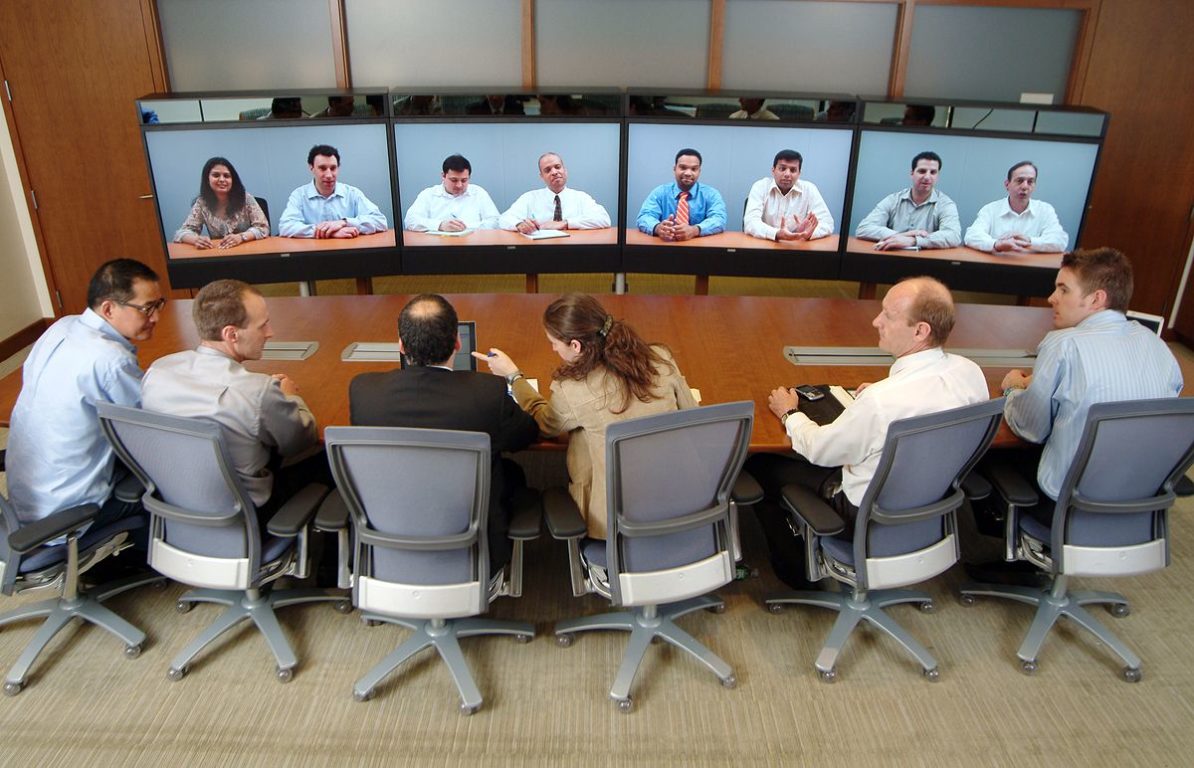The Guide To Holding Remote Team Meetings That Aren’t A Total Waste Of Time
Remote team meetings can be terrible. They’re the “chores” of the workplace. Whether it’s technology crashing or a user not being able to connect, you’ve probably been in a video chat that you considered a total waste of time.
On the upside, meetings are helpful for teams to stay connected, brainstorm, improve productivity, and get help with what they’re working on. But only if held properly.
In order for business to run smoothly in companies of all sizes, meetings are necessary to keep employees and managers all on the same page. Since team meetings will always be a necessity we’re sharing these tips to ensure they’re not painful. And don’t miss the infographic below from our friends at Hubstaff…
Be Prepared
This goes for any meeting. Whether in-person or virtual, make sure you have your materials and team updates in advance so the meeting can go according to plan.
At Process Street, we post links to what we’ve been doing in our ‘Content Creation’ Slack channel—this allows us to talk through it all, explain our workflow and process, and then get feedback. Businesses can also use employee feedback software so that employees can keep managers informed of their accomplishments and roadblocks, and discuss them in meetings.
Use the Best Tools Available
A remote team meeting is only as effective as the tools you use. Different teams arrangements can call for different types of tools, so find one that everyone is comfortable using and stick with it, don’t chop and change. Software that has screen sharing and video capabilities is always a plus.
There are many great tools to use to make your meetings run smoothly, here is a list of some of the most popular ones:
1) Join.me – Great to use if you are looking for fast and easy meetings using screen-share capabilities.
2) Zoom.us – Zoom allows up to 100 participants or devices to have a video conference, share screens, and even record the meeting or presentation.
3) Skype – A fitting option for chatting with people all around the world, although connectivity can be a bit buggy at times.
4) Appear.in – A permanent video chat room that people can pop in and out of at any time. When you sign up for appear.in, you get a fixed URL you can send to your team.
Keep in mind that no tool is completely error-free. You may have to deal with low-quality audio/video and disconnections at some point during your meetings. Such is the nature of remote work.
Keep Time Zones in Mind
When setting up your meeting, you need to keep in mind that not everyone can make the time that suits you. No one likes having a meeting at 6am or 10pm when they have commitments to family or other interests outside of work – like sleeping. Use a tool like Every Time Zone to get a quick overview of times all over the world. That way you won’t rudely suggest a meeting for a colleague when it’s 2am their time.
Pick a Location
Personally, I have been on Skype calls where the interviewer had the noisiest background imaginable. Traffic, dog barking, and doors banging made it extraordinarily difficult to make out what she was saying. So I just said ‘Yes’ to everything, which caused some unfortunate problems down the road. This is a common problem in shared office spaces.
What I am trying to say is, be conscious of where you are and what’s going on in the background. You will know your location better than others, what rooms are quietest and if there will be interference from wild or domesticated animals. If it is a formal meeting, having your pet around may not be the best idea. Oh and also don’t forget about that annoying creaky chair!
Speaking Over Each Other
When you’re working remotely, you get used to not being able to see everyone’s lips moving during meetings – due to a video delay or because it’s just a voice call. You’ll never know when someone is just about to begin speaking, so accidentally speaking simultaneously with someone else happens. There’s always that awkward “You go. No, you go…” situation where again everyone starts speaking over each other. The best way to avoid this is for someone to just take the lead.
Give Everyone the Chance to Talk
In nearly every group meeting, there are one or two people who will not say much or slip into total silence. Or there’s a chance that they might not be with you anymore because of a tech hiccup. Checking in with them every now and again, enables you to know they’re still listening. Enroll everyone in the conversation by making small-talk, by asking for feedback, or by asking everyone what tasks they have been working on.
Make Team Meetings a Regular Part of the Schedule
Avoid constant emergency or ad-hoc meetings, as these can break flow during an employee’s regular day. Agree on a time with your attendees when you will hold meetings, or make scheduling meetings a part of the employee onboarding process. Share a calendar with new hires which has all of the recurring meeting dates on it.
Most importantly, always be prepared several minutes before the call so that you can start on schedule. This sends the message that other people’s time is valuable, it allows you to avoid potential connection issues, and it also helps to jump-start conversations where everyone’s prepared.
 Benjamin Brandall is British writer living in Latvia. He writes on productivity, startups and software at Process Street. Find him on Twitter here.
Benjamin Brandall is British writer living in Latvia. He writes on productivity, startups and software at Process Street. Find him on Twitter here.
Image Credits: Fuelrefuel – Own work, CC BY-SA 3.0, Larry Jacobsen.



